James Nicolson (1557–1607) was Bishop of Dunkeld in 1607.
Bishop James Aitken (1613–1687) was a 17th-century Scottish prelate.
John McGarvie was a Scottish-born Australian Presbyterian minister and writer.

Hew Scott (1791–1872) was a minister of the Church of Scotland parish of Anstruther Wester. He is largely remembered as a religious researcher and author. His "magnum opus" is the comprehensive, multi-volume work, Fasti Ecclesiae Scoticanae: The succession of ministers in the parish churches of Scotland, from the reformation, A.D. 1560, to the present time. This is a detailed, biographical record of each of the ministers of each of the parishes of the Church of Scotland from 1560 to 1870.. It was first published between 1866 and 1871 but it is regularly updated by the Church of Scotland.
Neil Campbell was the son of Alexander, son of the parson [MacPherson], a member of the Campbells of Carnassarie.

The Queen's Hall is a performance venue in the Southside, Edinburgh, Scotland. The building opened in 1824 as Hope Park Chapel and reopened as the Queen's Hall in 1979.

Robert Wallace was a British writer who had a varied career as a classics teacher, minister, university professor, newspaper editor, barrister and finally a Member of Parliament for Edinburgh East.
Andrew Honeyman or Honyman (1619–1676) was a Scottish priest: he was Bishop of Orkney from 1664 until 1676.
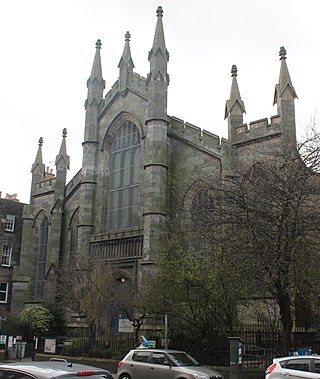
The Southside Community Centre is a community centre in the Southside, Edinburgh, Scotland, United Kingdom. The centre opened in 1986 and occupies the former Nicolson Street Church, which was completed in 1820.
John Gray was an Episcopalian minister of the Church of Scotland. In 1689, he 'became a non-juror'. as part of the schism following the Glorious Revolution. Upon his death his 'valuable library' was 'bequeathed to the Town of Haddington' which is now at the National Library of Scotland having been deposited there in 1961.
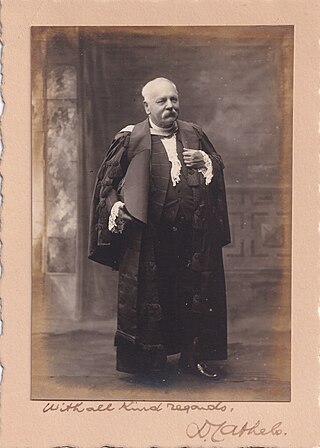
David Cathels (1853-1925) was a Church of Scotland minister. He served as Moderator of the General Assembly of the Church of Scotland in 1924.
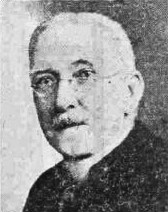
James Montgomery Campbell (1859-1937) was a Scottish clergyman who served as Moderator of the General Assembly of the Church of Scotland in 1928.
Telford Parliamentary church also known as the Telford Kirks are a series of presbyterian churches in Scotland built with money voted from the parliament of the United Kingdom as a result of the Church of Scotland Act 1824 for a grant of £50,000, designed by the surveyor William Thomson and built by the Scottish stonemason and architect Thomas Telford. In total, 32 churches were built and many are still in use today. Others have been abandoned, e.g. at Stoer, while others were destroyed and rebuilt, e.g. at Tobermory, while others have been converted to dwellings.
Archibald Fleming TD Order of St Sava (1863–c.1930) was a Scottish minister, military chaplain and religious author. He was Grand Chaplain to the Grand Lodge of Freemasons in Scotland.

Thomas Marjoribanks (1871–1947) was a Scottish minister of the Church of Scotland and religious author who served as minister of the parish of Colinton, Edinburgh, Scotland and also served the role as Chief of Clan Marjoribanks.

The King's Hall is a church in Newington, Edinburgh, Scotland. Constructed as Newington Free Church in 1843, it is now used by Community Church Edinburgh: an independent evangelical congregation.

St Paul's Parish Church was a parish church of the Church of Scotland located in St Leonard's, Edinburgh, Scotland. Its building served as a church between 1836 and 1942 before being demolished in 1980.

West St Giles' Parish Church was a parish church of the Church of Scotland and a burgh church of Edinburgh, Scotland. Occupying the Haddo's Hole division of St Giles' from 1699, the church was then based in Marchmont between 1883 and its closure in 1972.
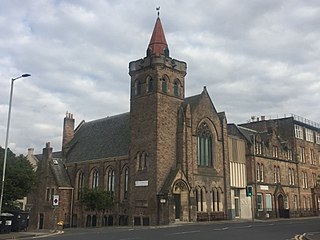
The Greyfriars Charteris Centre is a community centre in the Southside, Edinburgh, Scotland, part of the mission of Greyfriars Kirk. The centre opened in 2016 and occupies the 20th century church buildings which became Kirk o' Field Parish Church in 1969.
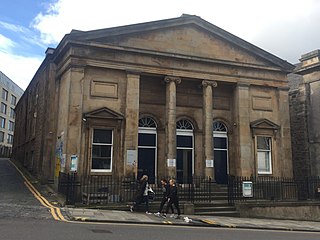
St Oran's Church was a Gaelic-speaking congregation of the Church of Scotland in Edinburgh. Originating in the early 18th-century, the congregation continued until 1948, latterly meeting at Broughton Street.
This page is based on this
Wikipedia article Text is available under the
CC BY-SA 4.0 license; additional terms may apply.
Images, videos and audio are available under their respective licenses.











